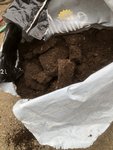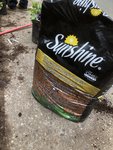Great info about German peat moss Leo. Initially all I was aiming for was to save the azalea as a shrub, then as a Bonsai. I think peat, if nothing else available would work fine to do the job.
That’s what lots of the nursery plants are grown in here anyways. I favor tossing in a good chunk of spagnum too. Maybe heretical, yet practical wins with me.
I did know the question came from Argentina and did a little research on peat sources, ....having been there ....my interest was piqued about peat in that area.
I’m thinking Walter Pall would say this peat was good for German
standards and use.... what do you all think?
Cheers
DSD sends
Age and formation of Patagonian Peatlands p2
Most peatland locations were occupied by ice during the Last Glacial Maximum
(LGM) approximately 24,500 BP. Glacial and postglacial processes molded favor-
able landforms for peatland development which followed the deglaciation, in the
age of 9–12 ky BP (early Holocene). Older records from early deglaciated
locations near the LGM termini have however been reported: 16 ky BP in southern
continental Patagonia in Rubens (Markgraf and Huber 2010) and Punta Arenas
(Heusser 1995) and 17 ky BP in southern Tierra del Fuego (Markgraf and Huber
2010). Older ages have been determined in North Patagonia for successional
deposits of peat and lake sediments (Villagran 2001).






